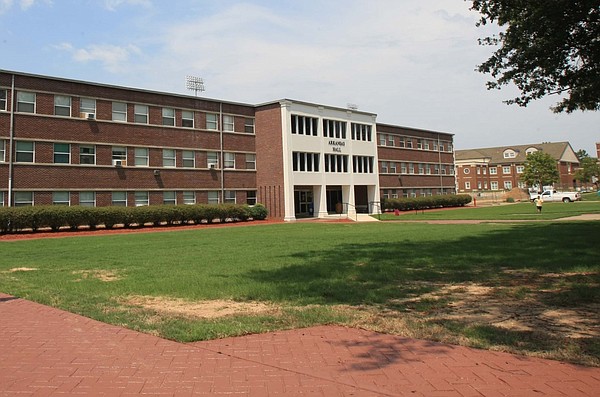Five of the six largest public universities in the state reported declines in the average net price, a measure of college affordability for new enrollees taking full-time courses.
The average net price estimates the true cost of a college education, taking into account expenses such as housing and common types of scholarships.
Data released this month on CollegeNavigator.gov shows cost estimates for the 2020-21 academic year, when five of Arkansas’ largest universities held the line on tuition and fees. The other, the University of Central Arkansas, raised them 1.8% that year, according to data from the state’s Division of Higher Education.
But the University of Central Arkansas also reported a 12.5% year-over-year decline in average net price. Conway’s campus average net price fell to $14,042, the lowest since the 2016-17 academic year, when the school’s average net price was $14,005.
A spokeswoman for the Conway campus did not respond to questions about the decrease.
The University of Arkansas at Fayetteville saw its average net price drop about 9.2% to $15,218 as students on average received more grants, a spokesperson said.
“A large increase in institutional aid, bolstered by the first year of $5 million in additional scholarships for the Arkansans, has reduced the average net price for students,” said the spokesperson for AU- Fayetteville, Mark Rushing, in an email.
Rushing said the average aid given rose to $8,902 in 2020-21. The National Center for Education Statistics is tracking the figure, but data for 2020-21 had not yet been released.
UA-Fayetteville also participates in what’s known as the Common Dataset, itself reporting an average award of $8,807 in 2020-21 to a group of 1,659 full-time freshmen receiving aid. and considered to be in financial need. The calculation was based on assistance from any source, excluding federal coronavirus relief grants.
That’s up from the previous year, when an average of $7,644 went to 1,668 full-time freshmen who received aid and were deemed to be in financial need, according to the Self-Reported Common Dataset. due to.
Rushing also said the 2020-21 academic year has seen a change in the housing choices students make, which has lowered costs.
“A higher percentage of freshmen lived at home for the 2020-21 academic year than in previous years, reducing the cost of attendance. Students living with their parents have a lower cost of tuition, because their room and board is half that of students living on campus,” Rushing said.
Prior to the 2020-21 academic year, UA allowed incoming students to raise concerns about covid-19 if they requested an exemption from a policy that typically requires freshmen to live on campus.
Among factors from other schools, a spokesperson for Arkansas State University explained a decrease of approximately 5% resulting from the university’s reporting costs for 12 semesters of credit hours in 2020-2021 instead of 15 semesters of credit hours in 2019-2020.
Arkansas State University had an average net price of $13,560 in 2020-21.
The University of Arkansas at Little Rock reported an average net price of $11,901, down about 2.7% from a year earlier. Arkansas Tech University’s net price fell to $11,097, down about 1.6% from a year earlier.
The University of Arkansas at Fort Smith reported that its average net price rose about 4.9% to $9,663 from 2019-20.
David H. Feldman, a William & Mary economics professor who has written about the cost of a college education, said differences in family wealth make the average net price of a college meaningless to a student.
Families in the top 10% of the income distribution in Arkansas likely pay full tuition and fees, for example, he said.
“On the other hand, if you’re on the lower end of the income scale, the average net price is probably more than you’ll have to pay,” he added.
Feldman linked trends in average net price to public funding of higher education and the quality of a college’s education.
When the average net price drops, Feldman said “one of two things has to happen.”
“Either the state appropriations have to go up to compensate, or if they don’t, something has to happen to the quality of education, unless you think there’s incredible fat in budgets.”
He pointed to data from the State Higher Education Executive Officers Association — an organization whose members include Arkansas’ Division of Higher Education — showing that education credits per student have declined in Arkansas since 1986. .
“It’s been largely a roller coaster ride ever since,” Feldman said.
Feldman said in higher education, “there’s a lot of pressure building up,” with some colleges and universities relying more on adjuncts and lower-paid faculty members not eligible for tenure to teach. to their students. As a result, courses students need to complete their studies may be overcrowded or even unavailable, he said.
“What worries me going forward is the growing divide in our higher education system between haves and have-nots,” Feldman noted.

